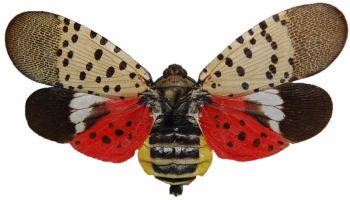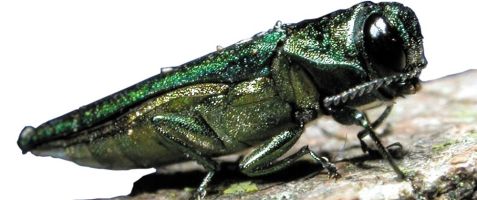Stein Answers Frequently Asked Tree Removal Questions
Trees are beautiful, provide shade, clean the air, and provide homes for all types of wildlife. In addition, trees can have a high sentimental value to us, having been a fixture in our great-grandparents’ homes or planted to commemorate a special event. In these types of cases, no one wants to consider tree removal. However, sometimes hiring a tree removal company is necessary to prevent damage to your property and for residents’ safety. To help homeowners by providing you with the knowledge to make informed decisions about your trees, Stein answers some of our frequently asked tree removal questions.
Do I Have to Get Rid of My Tree?
Sometimes, you pass a yard and see wide-trunked and towering beauties in a yard that rise a hundred feet over a home or other structure. Though these trees are impressive, are they safe? A certified arborist or other tree care specialist can determine whether a tree is at risk for falling even if no blatant signs exist. The specialist will evaluate the visible signs, like dead branches, fungal growth, dieback, or insect infestation. They will perform other tests, like a resistograph test, to determine if the tree is still viable or if cavities create vulnerability.
A resistograph test is a non-destructive method used to assess the internal condition of trees and timber. The process involves drilling a small hole, measuring resistance, interpreting the graph, and analyzing the results to identify decay, cavities, cracks, and healthy wood areas.
When is the Best Time for Tree Removal?
One of the frequent tree removal questions we get is when is the ideal time for removing trees. While tree removal can be done all year, late winter and early spring are ideal times for tree removal. One reason is that most trees will have bare branches, which makes it easier for a tree service company to inspect and remove them. That improved visibility is critical if a tree is near other structures, like a house or power lines.
What Will Happen to The Stump?
Homeowners who have to get a tree removed from their yards are often concerned about the stump. Specifically, people are worried about the conditions of their landscape when a tree is removed. Of course, a homeowner can leave the stump in the yard, but many reasons exist for removing them.
Leaving a tree stump in your yard can pose several risks, including creating a tripping hazard, damaging equipment, and allowing root growth. Tree stumps can also attract pests, look unsightly, restrict planting space, and reduce property value. Therefore, removing the stump after tree removal is recommended, especially in a high-traffic area.
Professional tree care companies use different methods to remove the stump. For example, Stein Tree Service uses a stump grinder to grind the tree stump into small chips. After stump grinding, our team can use these chips to fill the hole, or we can haul them away. Either way, we can entirely remove the tree in almost all cases.

Can I Have a Tree Removed if The Space is Small?
Homeowners with small yards or homes close to other homes worry that felling a tree could endanger the property or people nearby. For an inexperienced person, this is a genuine concern. However, a professional should do the job whenever a tree is removed, especially a large one. And in a tight space, having the knowledge and skill to make the precise cuts necessary is even more vital. Stein Tree Service has the equipment and skill to remove trees from any area. In fact, we recently removed one from behind some rowhouses in Wilmington, where the only access was through a small tunnel. We are also insured, so homeowners and specialists have protection if an accident should occur.
What Are Some Specific Signs That a Tree Is at Risk for Falling?
Determining whether a tree is at risk for falling or poses a potential hazard requires careful observation and assessment. Several signs indicate a tree’s structural integrity is compromised, making it more susceptible to failure.
One such sign is the absence or scarcity of leaves on the tree. An ordinarily leafy tree that suddenly shows little to no foliage could indicate underlying issues with its health or stability. Discolored leaves, especially if they appear wilted or brown, can also mean stress or disease within the tree.
The condition of the bark can provide valuable insights into a tree’s overall health. If you notice large patches of bark falling off or the bark appearing dry, the tree may suffer from environmental stress, fungal diseases, or insect diseases. As a result, you should reach out to a tree specialist for a comprehensive evaluation of your tree’s health.
Can I Just Cut Off the Top?
If trees are planted in a space that is insufficient for their mature size, they may have to be removed to avoid contact with homes or power lines. Homeowners often ask if we can just cut down trees to fit the space. This practice is called tree topping and is very detrimental to the tree.
What Are the Dangers of Tree Topping?
One of the dangers of tree topping is weakening of the tree. When you remove the top portion of a tree, you remove the primary source of nutrients and energy. This can leave the tree vulnerable to disease, insect infestation, and other environmental stresses. In addition, the many open wounds created by tree topping provide entry points for pests and pathogens to enter the tree. A certified arborist or tree care professional can advise homeowners of the best action if a tree has outgrown its space.

Stein Tree Service Provides Skilled Tree Removal in Delaware and Pennsylvania
Stein’s and skilled tree care specialists are committed to excellent tree care and answering your tree removal questions. In addition, our company has liability insurance to protect you and your property. If you have questions about your trees and their proper care, we can help. We will evaluate the trees in your landscape and recommend the best solution, which could include tree removal. On the other hand, your tree may only need careful trimming and pruning or other special care. Contact Stein for a free consultation.



